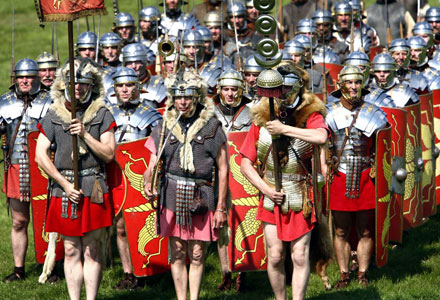Roman
Limestone Landscapes has little in the way of formal Roman imperial archaeology such as major roads or forts seen elsewhere in the region, instead the majority of recorded sites are individual or small groups of finds such as coins, pottery and occasional items of higher value such as silver spoons or bowls.
These can be put down to occasional votive deposits, intentionally buried as either offerings to the gods or for safe keeping. Examples found with Limestone Landscapes include a set of paterae from Bishop Middleham and two silver spoons from Kirk Merrington.
This background of occasional finds would seem to suggest that the area during the centuries of Roman occupation maintained a largely rural, farming economy. Although concentrations of finds, most notably down the coast, in particular in the area between Whitburn and Monkwearmouth may be indicative of areas of increased Romanisation. Finds along the coastal areas include pottery, quern-stones, coins and brooches, in addition to a bronze-figurine of the god Jupiter Dolichanus in 1820.



